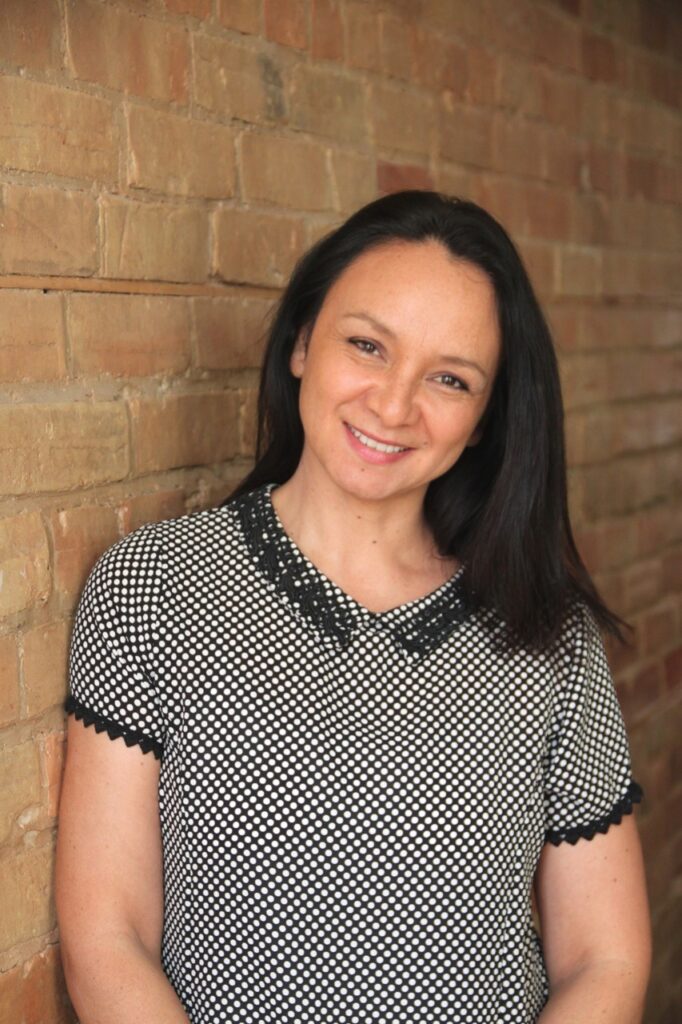Meeting Canadian Writers and Illustrators of Children’s Books
What inspires the writers of the books your students read? How does an illustrator decide what to draw? Is it true that most authors and illustrators don’t know each other? This column features a different Canadian children’s book creator in each issue and shows you the story beyond the covers.

You are a Canadian author who grew up in Australia and also spent time in Indonesia. Do these international experiences influence your writing?
Enormously so. In many cases, the settings of my books directly inform my stories, such as Music for Tigers, which is about the extinct thylacine found only in Australia and Berani, and about the endangered orangutan found only in Indonesia. The first short story, “Fox Bones,” featured in my collection, We the Sea Turtles, is set in Georgian Bay, Ontario, and was inspired by the sheer beauty of the setting there. I can’t imagine not incorporating these influences into my stories. Writing for me is very much about sharing my experiences and cultural background with readers.
What made you come to Canada?
My husband is Canadian, and I raised my children in Canada. It’s been my home for over 20 years, and I love it. I love the ruggedness of the Canadian landscapes and the inclusiveness of its people. Canada is also where I was able to achieve my dream of becoming a children’s author.
There is a strong sense of location and environment in your books. Were books and the environment a big part of your childhood?
Both played a huge role in my childhood. Growing up in Australia, you spend most of your time outside. When I think of my childhood, it’s running wild in nature. My family would often go to forest parks for day-long picnics and barbecues. My siblings and I would disappear for hours on nature trails. Books were the other place I loved to be. My mum used to read Enid Blyton books aloud to us before bed. The Magic Faraway Tree and The Enchanted Wood were especially captivating for me. As a tween, reading Scott O’Dell’s Island of the Blue Dolphins had a great impact. I think an element of those books runs through my stories in some way.
Many of your books deal with environmental concerns and young activists. Are you an activist?
I’m so inspired by youth activism, and one of the reasons I love to write for middle-grade readers is that it’s a wonderfully idealistic age. At age 10 or 11, we still look outward and truly believe we can change the world. Believing you can make a difference, no matter how small, is empowering. In my writing, I hope to inspire young readers to love the natural world around them. When we love something, we want to take care of it. In that sense, I guess my writing is a form of activism.
Where do your book ideas come from?
Many of my ideas come from interactions with our environment. I’m also drawn to themes of social justice and celebrating diversity. All of my stories, no matter what setting, feature elements of self-acceptance, self-empowerment, and the importance of family and friendships.
Getting an idea for a topic is one thing, but how do you arrive at whose voice will tell the story?
Not surprisingly, most of my ideas come to me when I’m out in nature. I love going for walks with my dog. I spend a lot of time composing in my mind. I’ve often spent months ruminating on the subject before I’ve started writing my thoughts down. Taking the idea from the ether into real life is the hard part. The voice telling the story comes alive at some point once I’ve started tapping away on my computer. I once heard a description that writing a novel is like stumbling around in a dark room, turning on lamps. That best describes my process. It all feels like a big muddle until I’ve written the first draft. After that, I reshape it into what I had originally imagined it to be.
I love your description of the writing process! Do you hear from readers that your books might have changed or helped them?
Hearing from young readers is most definitely the highlight of being a children’s author. As a writer, it is incredibly humbling to know that your words have had an impact on readers. All messages are wonderful to receive, but some stand out: a young woman wrote to say reading my book The Theory of Hummingbirds when she was in elementary school inspired her to become a writer herself; a reader who was going through an illness wrote to say that her hospital visits were easier since she had my books to read; an Indonesian/Australian girl told me she’d seen herself represented in fiction for the first time after reading Berani. We can never underestimate the power that stories can have.
What do you do during school presentations?
Many of my books have topics that support curriculum learning, such as biodiversity and social justice issues. Others touch on some of my personal experiences and background. I like to talk to students about “the story behind the story” and share my personal journey to writing a particular book. I also love to engage students in interactive activities like environmental quiz “races.”
What are you working on next?
For the first time, I’m trying my hand at historical fiction. The story is set during the Dutch colonization of Indonesia (known then as the East Indies). It centres around a girl in Java who writes letters to a Dutch pen pal. It is based on a real character named Kartini, who is a feminist icon in Indonesia. The story’s themes echo those in my earlier book, Girl of the Southern Sea, about gender equality and the importance of education for girls. I’m very excited to bring to life this period of Indonesian history for young readers.
For more information about Michelle Kadarusman and her books, check out: https://www.instagram.com/michellekadarusman/
Margriet Ruurs
Margriet Ruurs is the author of over 40 books for children and conducts (ZOOM) school presentations: margrietruurs.com
Enjoy her travel-and-books blog here: globetrottingbooklovers.com
This article is featured in Canadian Teacher Magazine’s Fall 2024 issue.

